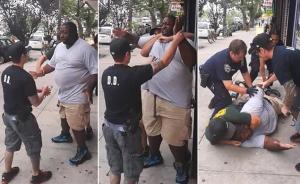For AAG 2018 I presented during the Mapping Urban In/justice I: Methods session that Taylor Shelton and Dillon Mahmoudi put together in the Digital and Urban Geographies Specialty groups. In my presentation I talked through one of the problems I’m working through. I’m trying to figure out some different ways of displaying my sidewalk interactions data (which I will start collecting soon!). My main task is to create a model with all the variables to look for patterns and associations. The mondo-list of variables include demographics, locations, types of interactions and trip purpose. Particularly with negative interactions I’m interested in whether there are types of participants who experience more negative interactions and whether there are people more likely to be viewed negatively by participants.
What about the spatial component? What types of maps might be useful? My initial idea was to create a series of heatmaps along demographic lines, kinda like this one I made with Hollaback App Data a few years ago:
But will I have enough data points to see clustering? Heatmaps are problematic objects. One of the biggest problems is establishing a useful baseline. Although I titled my map Manhattan Street Harassment, it’s more of a map of people who had smartphones and had heard of the app, I don’t think it’s a very accurate or precise map of the preponderance of actual instances of street harassment.
In order to establish a baseline for sidewalk interactions I need to first map the locations of potential interactions. I’ll use observations to mark where other people are likely to be and also map out the areas of public space vs private space. I’ll also have data about the likely path that the participant is walking that way I can also note deviations from it. (Thanks to Leah Meisterlin for talking through this with me, and for her great presentation on a more phenomenological approach to visualizing distances).
I have (at least) 3 different types of absence that I need to acknowledge and hopefully display visually. One is lack of data, people whose experiences I haven’t represented. Another is areas where people walked but didn’t record interactions. In addition there’s a particular kind of interaction that I need to track, which is an absence of interaction. It’s well known to men of color, when people cross the street in order to avoid interacting with you. In thinking of how to map absence, I’m indebted to Anthony Robinson and the paper he presented during a Cartography session:
In the same session I was also inspired by Somayeh Dodge’s work on time geography. https://videopress.com/v/8otCE1IE
I’m also interested in how these visualizations will be perceived or interpreted, particularly by the participants themselves.

